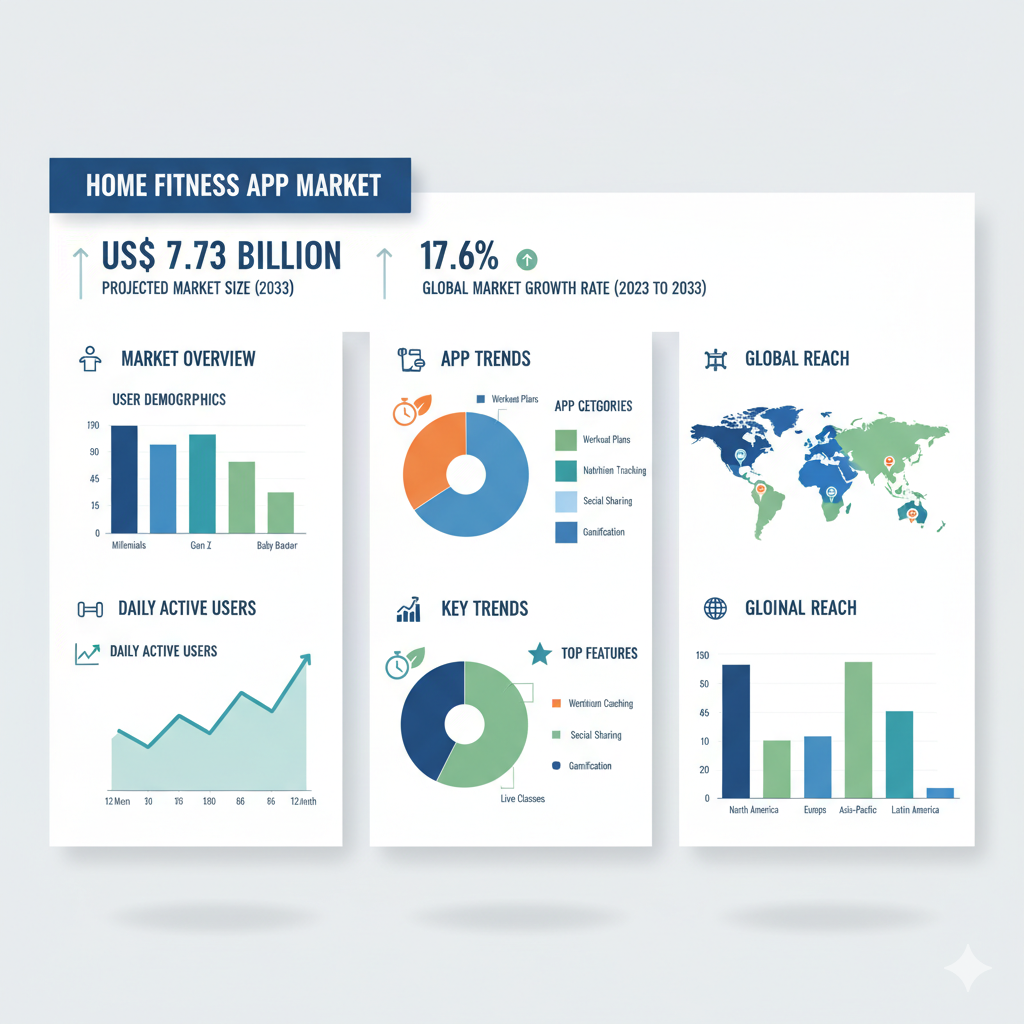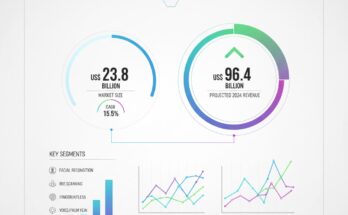The home fitness app market is witnessing remarkable growth as consumers increasingly gravitate toward on-demand, digital fitness solutions. The market is anticipated to value at US$ 1.53 billion by 2023 and is expected to expand to US$ 7.73 billion by 2033, at a CAGR of 17.6 % over the forecast period.
This growth reflects a major shift in consumer behavior — from traditional gym memberships to app-based, flexible, and personalized fitness regimes. The COVID-19 pandemic played a pivotal role in accelerating this transformation, as lockdowns and restrictions pushed millions to seek digital alternatives for exercise, weight management, and overall wellness.
Between 2018 and 2022, the industry already demonstrated robust expansion, maintaining a healthy annual growth rate. The increased reliance on mobile devices, rapid digitalization of the health sector, and the rising popularity of hybrid workout models are expected to sustain this upward trajectory well into the next decade.
Home Fitness App Market Analysis by Exercise & Weight Loss, Diet & Nutrition, and Activity Tracking
Within the market, the Exercise & Weight Loss category currently holds the dominant share, accounting for over half of total revenues. These applications provide users with guided workout sessions, personalized training plans, progress tracking, and real-time performance feedback. The convenience and accessibility of at-home workouts, combined with features like virtual coaching and AI-based customization, have made this segment the most popular among users seeking quick and measurable fitness results.
The Activity Tracking segment is also witnessing impressive growth and is projected to register one of the fastest CAGRs during the forecast period. These apps allow users to monitor their physical activities, including daily steps, calorie expenditure, heart rate, and sleep quality. The growing use of wearable devices such as smartwatches and fitness bands has significantly enhanced the accuracy and appeal of activity tracking apps, fostering deeper engagement and long-term usage.
Meanwhile, the Diet & Nutrition category continues to strengthen its position as users increasingly understand the connection between fitness, diet, and holistic health. Apps in this segment offer calorie counting, meal planning, and nutritional advice, often synced with users’ fitness and activity data. The integration of diet tracking with exercise and activity monitoring creates a unified wellness ecosystem, helping individuals achieve more sustainable health outcomes.
Recent Developments and Competitive Landscape
The home fitness app market is highly competitive, characterized by rapid innovation and technological advancement. Major players are investing heavily in artificial intelligence and machine learning to enhance personalization, offering workouts and diet recommendations tailored to each user’s needs and preferences.
Another emerging trend is gamification, where apps incorporate challenges, leaderboards, and reward systems to boost user motivation and engagement. Social integration has also become a major feature, allowing users to share progress, compete with friends, and join online fitness communities. These features not only improve user experience but also increase retention rates in an industry where engagement is key.
The integration of apps with wearable devices has further revolutionized the market. Seamless data synchronization between smartphones and wearables enables real-time tracking and detailed performance analytics. This trend has given rise to partnerships between fitness app developers and technology giants specializing in smartwatches, heart rate monitors, and biometric sensors.
Prominent players in the market include Under Armour, Polar Electro, Adidas, Nike, Google, ASICS, Fitbit, MyFitnessPal, and Noom. Each brand brings its own competitive edge, ranging from AI-powered personalization to deep integration with hardware and data-driven insights. For instance, Nike and Adidas focus on combining community-driven fitness with brand loyalty, while Noom and MyFitnessPal emphasize behavior modification and nutrition tracking.
North America remains the largest regional market, holding a significant share due to the high rate of smartphone penetration and growing health awareness. However, the Asia-Pacific region is emerging as the fastest-growing market, fueled by increasing digital adoption, rising disposable incomes, and greater awareness of fitness and wellness.



